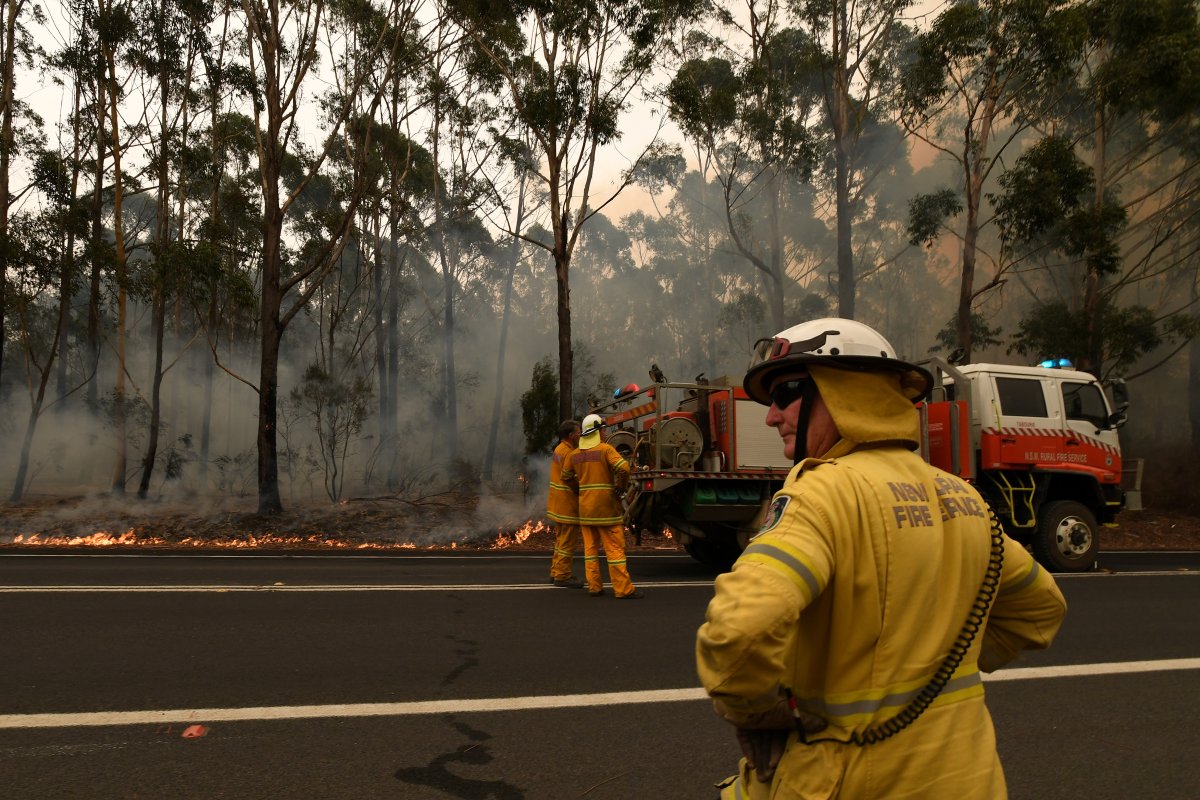Australia’s wildfires are burning an area larger than the size of Nova Scotia, size figures from officials show.

Fire services from New South Wales, Victoria and the country’s western region told Global News that Australia’s wildfires, which have been fuelled by persistent heat waves, one of the worst droughts the country has seen in decades and the effects of climate change, have collectively swelled to 8.4 million hectares over the course of the last five months, destroying more than 2,000 homes.
The death toll has risen to 24 people. Researchers estimate nearly 480 million mammals, birds and reptiles have been affected by the wildfires in the state of New South Wales alone since September.
To give perspective, the fires cover a larger area than the provinces of Nova Scotia and Prince Edward Island and are nearly 10 times the size of the Fort McMurray fires, which burned 589,000 hectares in 2016 and forced upwards of 88,000 people from their homes.
Australian Bureau of Meteorology said last week that New South Wales has endured its driest 34-month period on record. At the same time, Australia has also experienced its second-warmest January-to-October period compared to records dating back 110 years.
Recent rain and cooler temperatures are bringing some much-needed relief to the country’s states, but fire officials said Monday there were still more than 135 fires burning across New South Wales.

Get breaking National news
Seventy of those fires are not contained, and higher temperatures are in the weather forecast for later in the week.
In Victoria, the wildfires are raging across 1.2 million hectares of land. Konrad Gill, state agency commander at the State Control Centre in Melbourne, Aus., told Global News 200 mm of rain would be needed in the next few days to put out the fires in Victoria — a number he calls “highly unlikely” for a state that is typically dry and undergoing a drought.
“It is highly unlikely we’ll get that amount of rain before winter and we’ve just started summer,” he said.
Gill added that over 1,000 firefighters have been working to put out the fires for over a month, most of them volunteers. He expects the fires will last “at least another two months.”
“There’s a very strong community feel that we’re all working together for the benefit of the community to try and get through this,” said Gill.

“They’re volunteering for the greater good of the community to go and put those fires out.”
Gill’s estimates come two days after Australian Prime Minister Scott Morrison said the government was committing AU$2 billion towards a new bushfire recovery fund in addition to millions of dollars that have already been promised.
Morrison also deployed 3,000 army, navy and air force reservists to help battle the flames — the first time reservists have ever been called for bushfires in the country’s history.
His announcements came amid sharp criticism that blamed the prime minister for responding to the crisis too slowly.
Morrison was lambasted in December for defending his government’s lax climate policies and rejecting calls to downsize Australia’s lucrative coal industry.
“I am not going to write off the jobs of thousands of Australians by walking away from traditional industries,” he told Australia’s Channel Seven News. Australia is the world’s largest exporter of coal and liquefied natural gas.
The speed of the fires, coupled with the consistently dry conditions, has created a situation firefighters are struggling to control.
Brent Clayton, an active firefighter in Australia with 12 years of experience, said what stands out the most is the country’s lack of planning for bushfire season each year, making it difficult for firefighters to do their jobs.
“It’s not a surprise that we have fires. It’s just that every so often they’re a bit worse than usual,” said Clayton.
“Instead of, say, putting two billion dollars in a rebuilding fund, it’d be good to see some of that money put into resourcing and planning so that we didn’t have to rebuild so much.”
Clayton founded Fire Recruitment Australia, an organization that teaches people the skills to become firefighters. Since last year’s bushfires began, he said he’s noticed a significant increase in sign ups for his recruitment process.
“The whole country seems to banding together and really kicking in,” he said. “Hopefully we’ll see a bit of light at the end of the tunnel soon enough.”
— With files from Kerri Breen.
- Donald Trump claims B.C.’s ‘very large faucet’ could help California’s water woes
- Canada must speed up progress to hit its 2030 emissions target: report
- U.S. TikTok ban case pits free speech vs. national security. Which will win?
- A final, tragic text from doomed Titan sub revealed at Coast Guard hearing















Comments